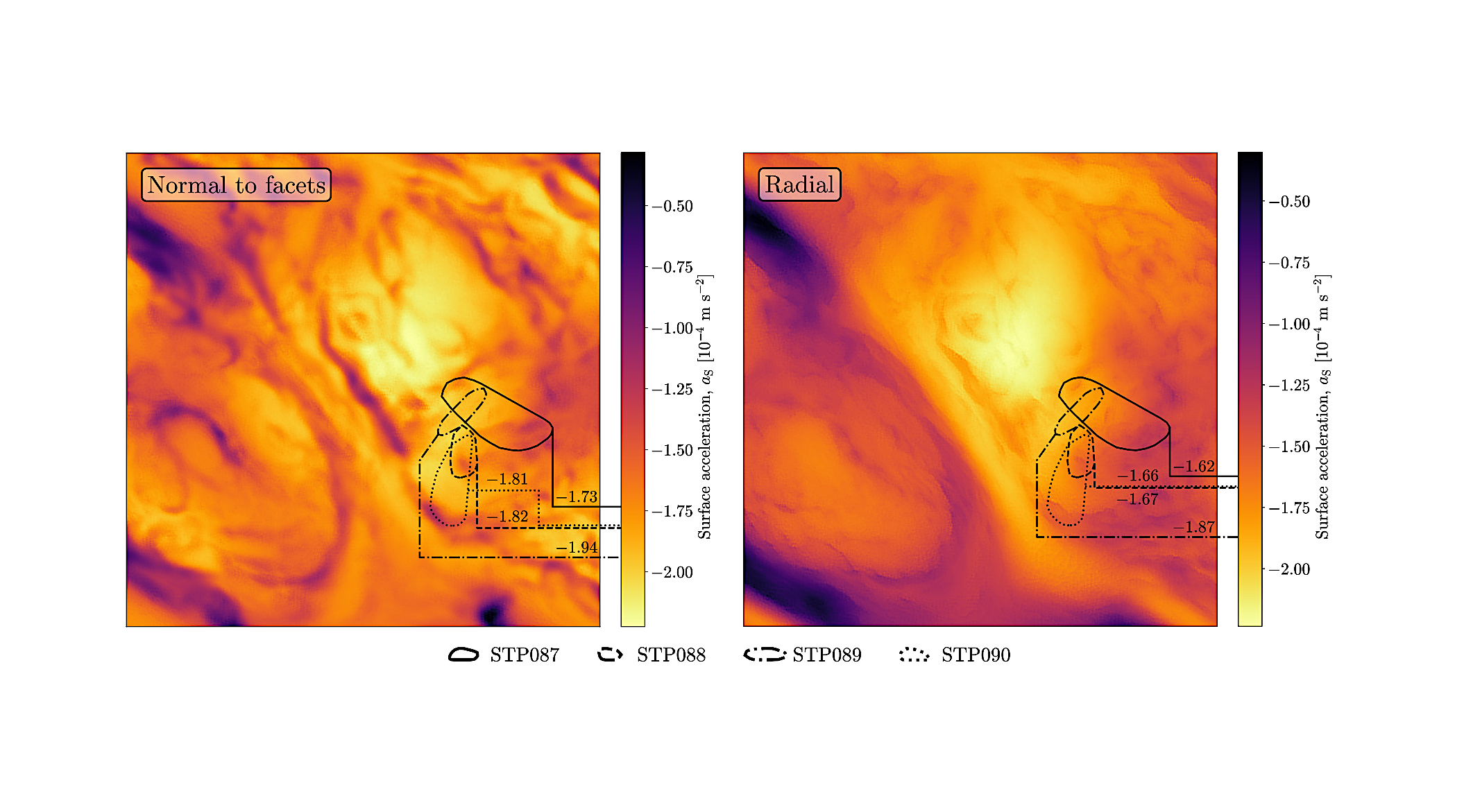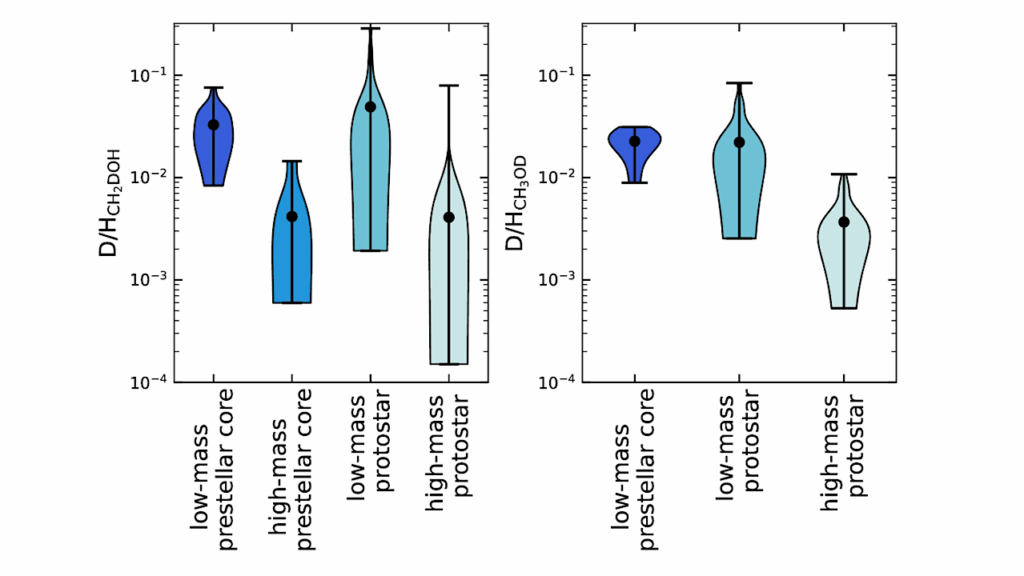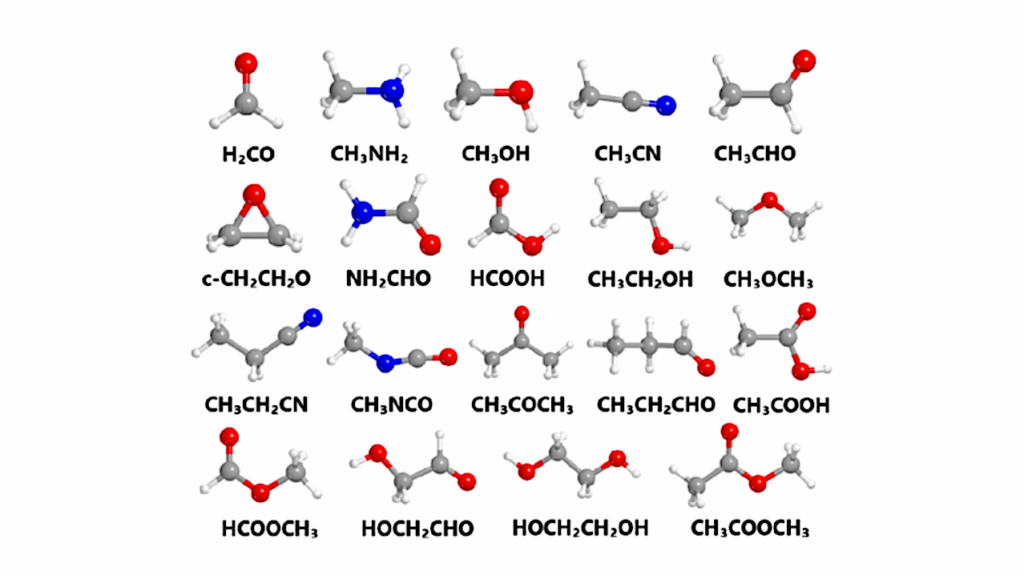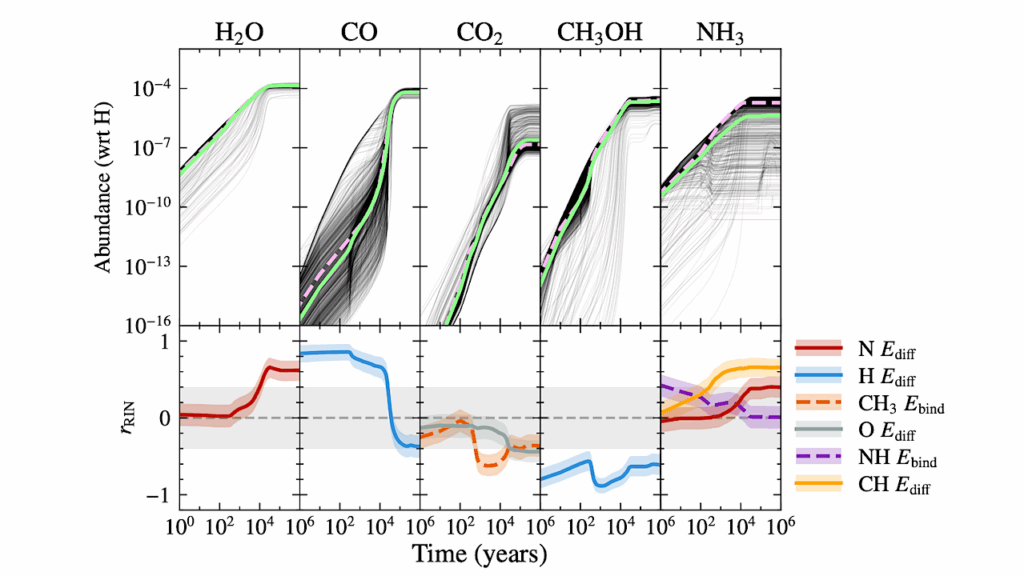Origins Of Decimeter-sized Particles Around Comet 67P/Churyumov-Gerasimenko

Methods. We algorithmically tracked thousands of individual particles through four OSIRIS/NAC image sequences of 67P’s near-nucleus coma. We then traced concentrated particle groups back to the nucleus surface, and estimated their potential source regions, size distributions, and projected dynamical parameters. Finally, we compared the observed activity to dust coma simulations.
Results. We traced back 409 decimeter-sized particles to four suspected source regions. The regions strongly overlap and are mostly confined to the Khonsu-Atum-Anubis area. The activity may be linked to rugged terrain, and the erosion of fine dust and the ejection of large boulders may be mutually exclusive. Power-law indices fitted to the particle size–frequency distributions range from 3.4±0.3 to 3.8±0.4.
Gas drag fits to the radial particle accelerations provide an estimate for the local gas production rates (Qg=3.6⋅10−5 kg s−1 m−2), which is several times higher than our model predictions based on purely insolation-driven water ice sublimation. Our observational results and our modeling results both reveal that our particles were likely ejected with substantial nonzero initial velocities of around 0.5−0.6 m s−1.
Conclusions. Our findings strongly suggest that the observed ejection of decimeter-sized particles cannot be explained by water ice sublimation and favorable illumination conditions alone. Instead, the local structures and compositions of the source regions likely play a major role. In line with current ejection models of decimeter-sized particles, we deem an overabundance of CO2 ice and its sublimation to be the most probable driver. In addition, because of the significant initial velocities, we suspect the ejection events to be considerably more energetic than gradual liftoffs.
Marius Pfeifer, Jessica Agarwal, Raphael Marschall, Björn Grieger, Pablo Lemos
Comments: 31 pages, 29 figures
Subjects: Earth and Planetary Astrophysics (astro-ph.EP)
Cite as: arXiv:2402.18613 [astro-ph.EP] (or arXiv:2402.18613v1 [astro-ph.EP] for this version)
Submission history
From: Marius Pfeifer
[v1] Wed, 28 Feb 2024 15:37:47 UTC (24,433 KB)
https://arxiv.org/abs/2402.18613
Astrobiology, Astrochemistry,








